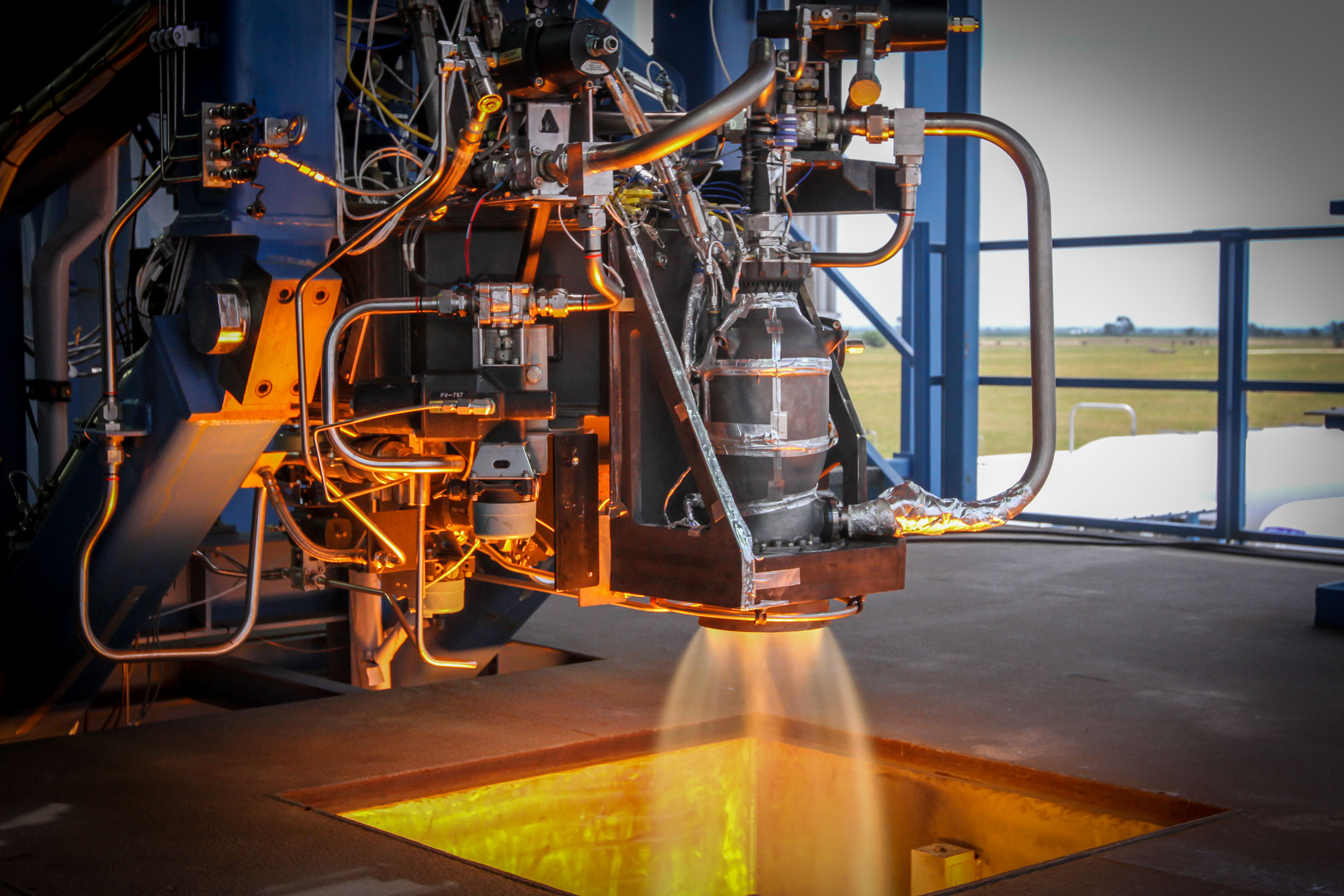
Editor's Update (1 a.m, May 30 EDT): SpaceX has stylishly unveiled its new Dragon Version 2 manned spacecraft. See our full story, photos and video here: SpaceX Unveils Dragon V2 Spaceship, a Manned Space Taxi for Astronauts
WASHINGTON — Space Exploration Technologies Corp. completed qualification tests of the SuperDraco thruster that will power the launch abort system on the crewed version of the Dragon space capsule the company is developing with financial aid from NASA.
SpaceX performed multiple SuperDraco hot fires at its McGregor, Texas, test facility in April and May, according to a press release issued May 28.
SuperDraco is intended for use with Dragon Version 2, a crewed version of the spacecraft SpaceX already uses to deliver cargo to and from the space station under a NASA contract signed in 2008. SpaceX is set to unveil Dragon Version 2 at its Hawthorne, California, headquarters May 29. Each Dragon Version 2 will use eight of the restartable thrusters, each of which produces up to 16,000 pounds of thrust, according to SpaceX’s press release. The abort system would function as intended even if one SuperDraco failed, SpaceX said. [The Rockets and Spaceships of SpaceX (Photos)]
SpaceX is scheduled to test the launch abort system at the pad at Cape Canaveral Air Force Station, Florida, later this year, the company said in the press release. The test is a $30 million milestone under the roughly $440 million Commercial Crew Integrated Capability contract NASA gave the company in August 2012. At that time, NASA and SpaceX thought the pad abort test would be done by December 2013.
In the pad abort test, Dragon will be propelled from the top of a mocked-up Falcon 9 rocket, its intended launch vehicle, to determine whether the escape system would work in the event of an anomaly early in the launch process.
SuperDraco's engine chamber is a 3-D-printed part, made from a nickel-chromium alloy known by its designer, Special Metals of New Hartford, New York, as Inconel. In the press release, SpaceX Chief Executive Elon Musk said 3-D printing — also known as additive manufacturing — allows "high-performing engine parts [to] be created at a fraction of the cost and time of traditional manufacturing methods."
Get the Space.com Newsletter
Breaking space news, the latest updates on rocket launches, skywatching events and more!
Besides launch abort, SuperDraco thrusters will allow SpaceX's spacecraft to land propulsively on the ground, the company says. Propulsive Dragon landing tests are slated to begin at McGregor under the DragonFly program currently under environmental review by the Federal Aviation Administration's Office of Commercial Space Transportation.
NASA's Commercial Crew Program aims to replace the space shuttle's crew-carrying capacity to the International Space Station with one of three commercially designed systems by late 2017. Boeing Space Exploration of Houston and Sierra Nevada Space Systems of Louisville, Colorado, are also in the competition. An award for the fourth major phase of the program, which is expected to culminate with the first U.S.-launched crewed flight to station since the space shuttle flew its final mission in 2011, is expected in July or August.
Follow Dan Leone @Leone_SN on Twitter.This story was provided by SpaceNews, dedicated to covering all aspects of the space industry.
Join our Space Forums to keep talking space on the latest missions, night sky and more! And if you have a news tip, correction or comment, let us know at: community@space.com.
Dan Leone is an editor and reporter for the ExchangeMonitor Publications covering the Department of Energy and Department of Defense nuclear weapons programs. From 2011 to 2016, Dan was the NASA reporter for the space industry publication SpaceNews, where he covered U.S. space agency policy, news and missions. He also produced the SpaceGeeks podcast showcasing interviews with space industry professionals. Dan earned a bachelor's degree in public communications from American University. You can find his latest project on Twitter at @leone_exm.










